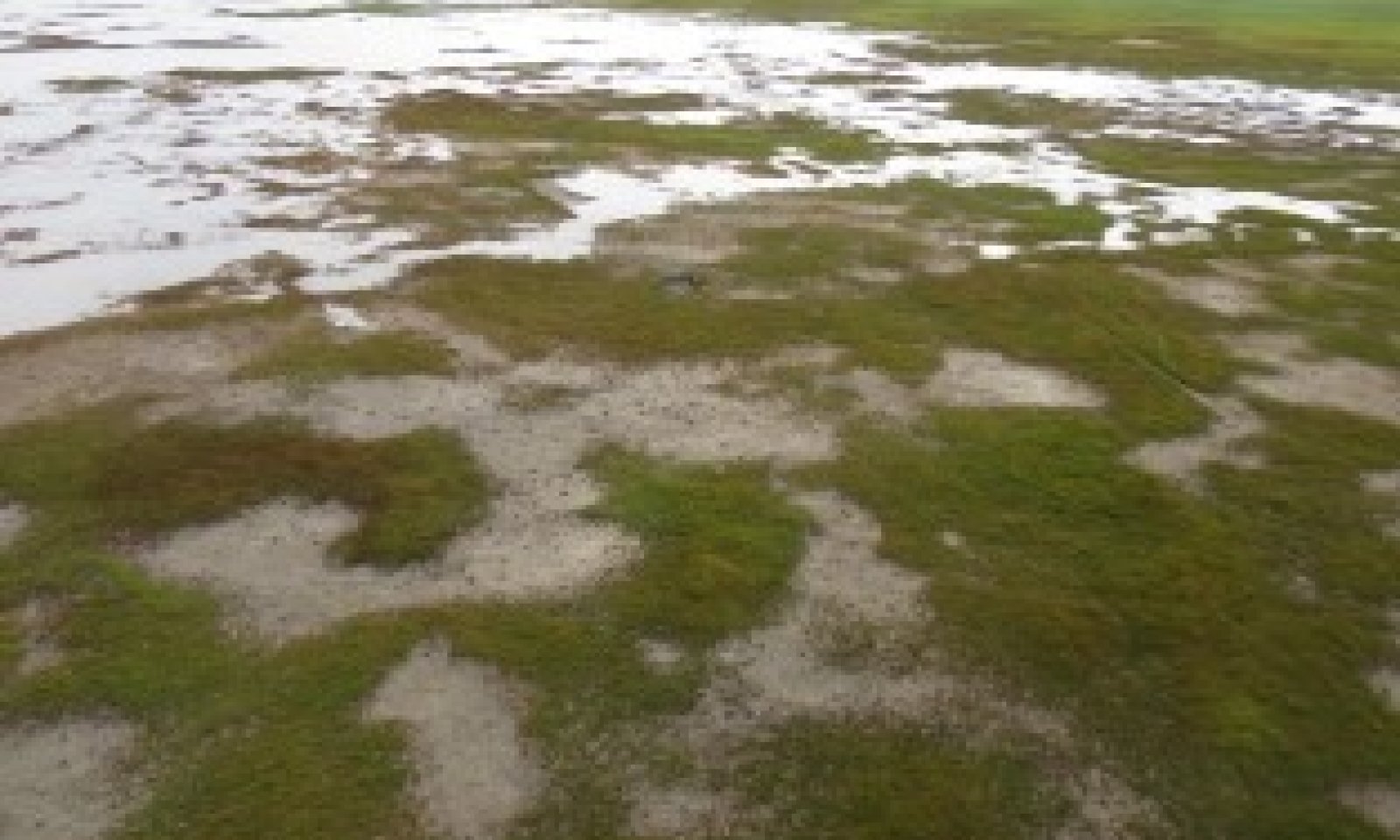
Arctic Sedge Loamy Tidal Marsh
Scenario model
Current ecosystem state
Select a state
Management practices/drivers
Select a transition or restoration pathway
-
Transition T1
decreased tidal influences and/or increased freshwater inputs
More details -
Transition T2
increased tidal influences and/or decreased freshwater inputs
More details -
No transition or restoration pathway between the selected states has been described
Target ecosystem state
Select a state
Description
The reference plant community is halophytic sedge wet meadow (Viereck et al. 1992) dominated by Hoppner’s sedge and at times Ramensk's sedge. Two plant communities occur within the reference state related to the frequency and duration of tidal inundation.
The vegetation modeled for this ecological site has limited data and is considered provisional.
Submodel
Description
The reference plant community is halophytic sedge wet meadow (Viereck et al. 1992) with the dominant plant being alpine looseflower sedge. One plant community was identified within this alternate state. Compared to the reference state, vegetation and soils experience comparably less frequent tidal flooding and/or are flooded with brackish water in estuaries.
The vegetation modeled for this ecological site has limited data and is considered provisional.
Submodel
Model keys
Briefcase
Add ecological sites and Major Land Resource Areas to your briefcase by clicking on the briefcase (![]() ) icon wherever it occurs. Drag and drop items to reorder. Cookies are used to store briefcase items between browsing sessions. Because of this, the number of items that can be added to your briefcase is limited, and briefcase items added on one device and browser cannot be accessed from another device or browser. Users who do not wish to place cookies on their devices should not use the briefcase tool. Briefcase cookies serve no other purpose than described here and are deleted whenever browsing history is cleared.
) icon wherever it occurs. Drag and drop items to reorder. Cookies are used to store briefcase items between browsing sessions. Because of this, the number of items that can be added to your briefcase is limited, and briefcase items added on one device and browser cannot be accessed from another device or browser. Users who do not wish to place cookies on their devices should not use the briefcase tool. Briefcase cookies serve no other purpose than described here and are deleted whenever browsing history is cleared.
Ecological sites
Major Land Resource Areas
The Ecosystem Dynamics Interpretive Tool is an information system framework developed by the USDA-ARS Jornada Experimental Range, USDA Natural Resources Conservation Service, and New Mexico State University.
